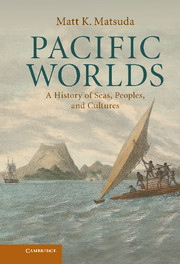Book contents
- Frontmatter
- Contents
- Illustrations
- Maps
- Acknowledgments
- Map
- Introduction: Encircling the ocean
- 1 Civilization without a center
- 2 Trading rings and tidal empires
- 3 Straits, sultans, and treasure fleets
- 4 Conquered colonies and Iberian ambitions
- 5 Island encounters and the Spanish lake
- 6 Sea changes and spice islands
- 7 Samurai, priests, and potentates
- 8 Pirates and raiders of the Eastern seas
- 9 Asia, America, and the age of the galleons
- 10 Navigators of Polynesia and paradise
- 11 Gods and sky piercers
- 12 Extremities of the Great Southern Continent
- 13 The world that Canton made
- 14 Flags, treaties, and gunboats
- 15 Migrations, plantations, and the people trade
- 16 Imperial destinies on foreign shores
- 17 Traditions of engagement and ethnography
- 18 War stories from the Pacific theater
- 19 Prophets and rebels of decolonization
- 20 Critical mass for the earth and ocean
- 21 Specters of memory, agents of development
- 22 Repairing legacies, claiming histories
- Afterword: World Heritage
- Notes
- Index
3 - Straits, sultans, and treasure fleets
Published online by Cambridge University Press: 05 June 2012
- Frontmatter
- Contents
- Illustrations
- Maps
- Acknowledgments
- Map
- Introduction: Encircling the ocean
- 1 Civilization without a center
- 2 Trading rings and tidal empires
- 3 Straits, sultans, and treasure fleets
- 4 Conquered colonies and Iberian ambitions
- 5 Island encounters and the Spanish lake
- 6 Sea changes and spice islands
- 7 Samurai, priests, and potentates
- 8 Pirates and raiders of the Eastern seas
- 9 Asia, America, and the age of the galleons
- 10 Navigators of Polynesia and paradise
- 11 Gods and sky piercers
- 12 Extremities of the Great Southern Continent
- 13 The world that Canton made
- 14 Flags, treaties, and gunboats
- 15 Migrations, plantations, and the people trade
- 16 Imperial destinies on foreign shores
- 17 Traditions of engagement and ethnography
- 18 War stories from the Pacific theater
- 19 Prophets and rebels of decolonization
- 20 Critical mass for the earth and ocean
- 21 Specters of memory, agents of development
- 22 Repairing legacies, claiming histories
- Afterword: World Heritage
- Notes
- Index
Summary
Iskandar Shah, the Sultan of Malacca, is today commemorated in a reconstructed royal palace with cast figures and courtiers attending him in royal splendor. He sits on a raised wooden platform surrounded by guards. The carved window frames and screens look out down a hillside where the hazy sea spreads away. That sea is narrow, a strait between the peninsula of modern-day Malaysia and the island of Sumatra. The Sultan's authority rests upon his control of a vital trading port, midway between the Indian Ocean with its domination by Indian and Arab traders, and the South China Sea and Pacific. The seas around Malacca are filled with merchants and tribute vessels, and by the Orang Laut sea people who serve as a patrol force, steering flotillas to shore for obligatory trade.
In its local history, Malacca (Melaka) is a powerful and wealthy city, spread across a river channel joined by a bridge. A palace rises on one side against the hills, while the opposite river bank is loud with activity from entrepôts, stockhouses, and trading companies. All year round, voices can be heard speaking in Malay, Chinese, Arabic, and Hindi. In its busiest years, more than eighty different languages and dialects from the Arab world to India and from Asia and Oceania will be heard in the streets and trading pavilions.
- Type
- Chapter
- Information
- Pacific WorldsA History of Seas, Peoples, and Cultures, pp. 37 - 48Publisher: Cambridge University PressPrint publication year: 2012



